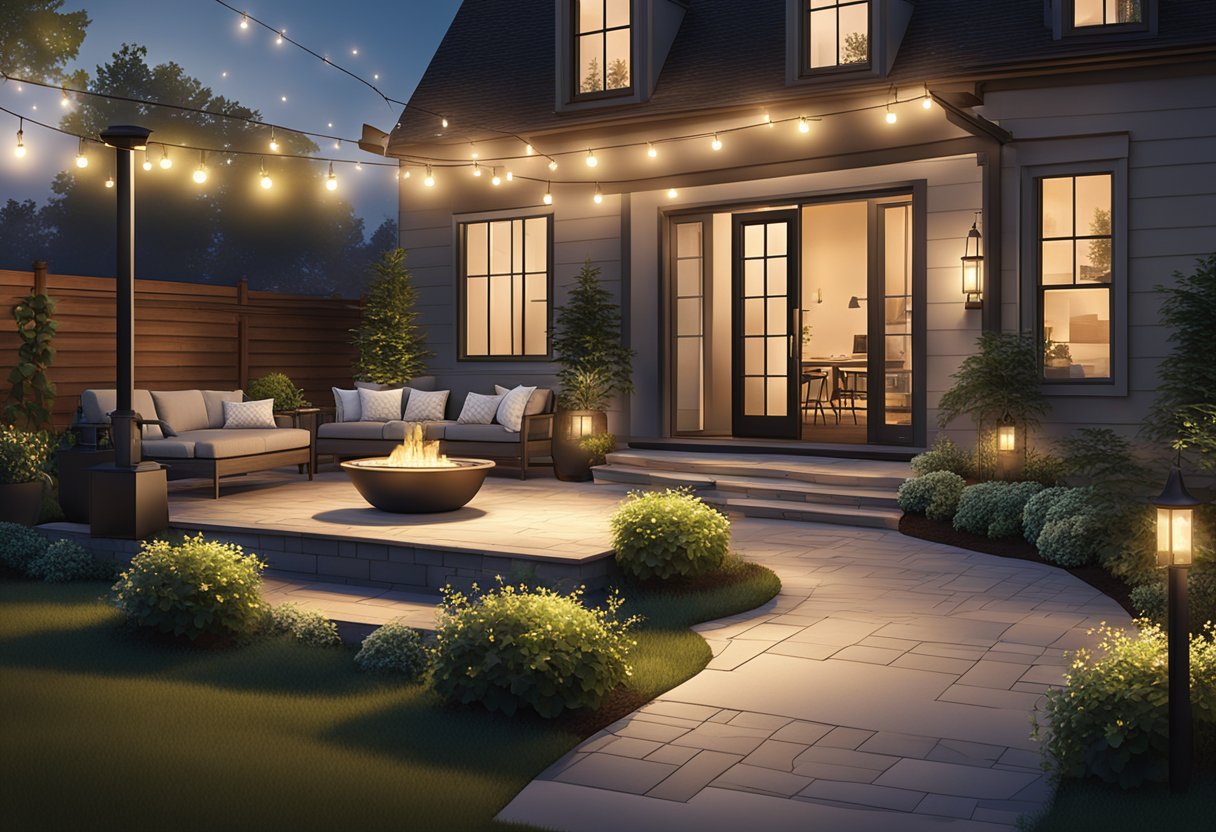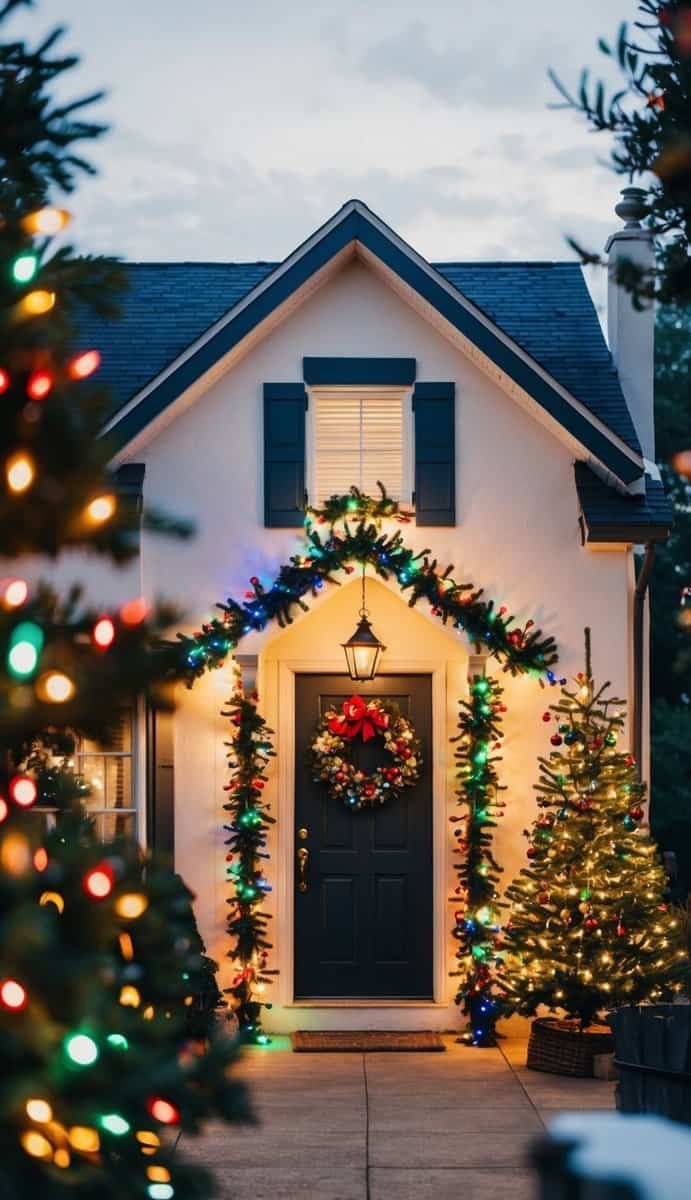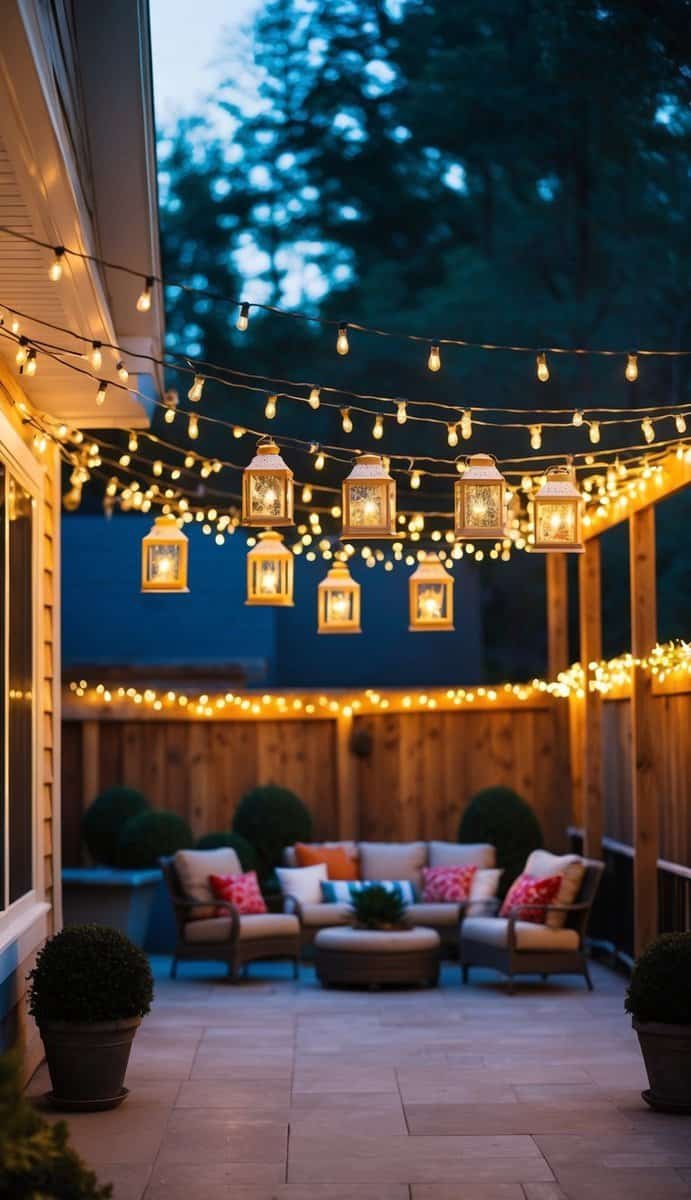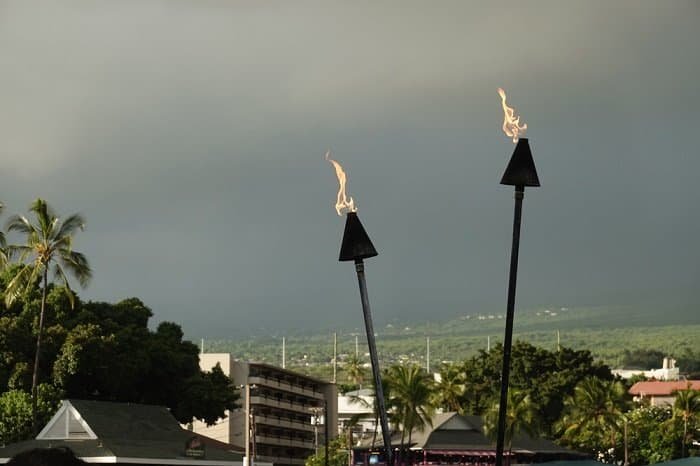How to Incorporate Smart Lighting into Your Outdoor Spaces
Incorporating smart lighting into outdoor spaces can enhance ambiance, increase security, and provide convenience through automation. Smart lighting systems are designed to connect seamlessly with other smart home devices, allowing for easier control and customization. We’re now able to adjust lighting based on the time of day, weather conditions, or specific events—all from our smartphones or voice-activated devices.

When we plan our smart outdoor lighting, it’s essential to consider the atmosphere we want to create and how the lighting will serve our needs. Whether it’s setting the perfect mood for an evening garden party or lighting up a pathway for safety, smart lighting gives us the flexibility to adapt our outdoor environments. With various smart lighting features and accessories available, we can select products that will withstand outdoor elements and cater to our desired aesthetic.
Installation and maintenance are important aspects of smart outdoor lighting. While some may opt for a DIY approach, others might prefer professional installation to ensure their systems are set up correctly. Once installed, routine maintenance will keep our lights shining bright and functioning properly for years to come. Smart lighting can also be a cost-effective solution in the long run, with energy-efficient LEDs and motion sensors contributing to lower electricity bills.
Table of Contents
Understanding Smart Outdoor Lighting
Smart outdoor lighting transforms our gardens, patios, and other outdoor areas into well-lit, welcoming spaces that combine convenience with energy efficiency. At the heart of this transformation are smart bulbs, which are often LED-based to ensure lower energy consumption while providing myriad lighting options. LED bulbs in smart lighting systems give us the advantage of long life spans and reduced wattage requirements, making them cost-effective and eco-friendly.
We can control our smart outdoor lighting using various devices such as smartphones, smartwatches, or voice assistants. This control extends to brightness levels, allowing us to create the perfect ambiance for any outdoor occasion. The flexibility of changing millions of colors and dynamic lighting effects empowers us to personalize our outdoor spaces for parties, relaxation, or safety purposes.
We typically install smart light bulbs into existing outdoor lighting fixtures. It’s essential to ensure that these fixtures and bulbs are rated for outdoor use to withstand the elements. Here’s what to look for when choosing smart outdoor lights:
- Brightness: Measured in lumens, ensure it’s suitable for your space.
- Wattage: Lower wattage means less energy consumed.
- Colors: Opt for bulbs offering a wide color spectrum.
- Effects: Consider bulbs with preset or customizable lighting effects.
By integrating smart outdoor lights into our homes, we not only enhance the livability of our outdoor areas but also enjoy the benefits of customized lighting that’s operable at our fingertips.
Planning Your Smart Lighting Design
When we consider enhancing our outdoor living spaces with smart lighting, it’s essential to meticulously plan our approach to ensure a harmonious blend of functionality and aesthetics.
Determining Your Outdoor Lighting Needs
First, let’s pinpoint exactly what we want to achieve with our smart lighting. Are we illuminating our backyard for security, or are we hoping to create a cozy atmosphere for outdoor entertaining? By assessing areas like the patio, deck, and outdoor kitchen, we can decide whether we need ambient lighting or targeted illumination for features such as trees and plants.
Selecting the Right Smart Lighting Fixtures
Choosing the right fixtures is crucial. Our options range from Philips Hue Calla Outdoor Bollard for a modern look to Ring Solar Pathlight for eco-friendly path lighting. Consider durability and compatibility with existing systems. Spotlights and floodlights might be perfect for highlighting décor, while string lights or lanterns can add a warm glow to patios and sitting areas.
Creating Zones and Layers
Organizing our space into lighting zones can help us manage and customize our outdoor areas effectively. We might separate our outdoor kitchen from a seating area, each with different lighting intensities and colors. Layers of light—from overhead lanterns to subtle pathway lights—ensure that each area is lit appropriately for its respective function.
Considering Installation Factors
Installation needs to be thought about with care. We should look at ease of installation and whether we can do it ourselves or need professional help. Mounting and wiring should be planned in accordance with the layout of our outdoor spaces. Remember, all fixtures should have a durable design to withstand the elements, be it a sunny afternoon or a rainy evening.
Connecting and Controlling Smart Lighting

As we dive into the exciting world of smart outdoor lighting, it’s essential to understand how to connect and control these innovative devices to enhance our outdoor living spaces.
Understanding Connectivity Options
Smart outdoor lighting products typically connect via Wi-Fi, Bluetooth, or a specialized protocol like Zigbee. Wi-Fi options allow lights to connect directly to the internet through our home network. For areas outside the Wi-Fi range, Bluetooth can be a convenient choice, as it pairs directly with our mobile device. Products using Zigbee require a hub, such as the Philips Hue Bridge or Samsung SmartThings, to translate the signal into one that’s Wi-Fi compatible.
- Wi-Fi: Reach lights anywhere within the network’s range.
- Bluetooth: Pair with devices in close proximity.
- Zigbee: Utilize a smart hub for extended range and capabilities.
Choosing Control Methods
There’s an array of methods to control our smart outdoor lighting—from mobile apps to voice commands. Using a smartphone app, we can switch the lights on or off, adjust brightness, and change colors. Voice assistants like Amazon Alexa, Google Assistant, or Apple HomeKit enable us to control lights with voice commands, offering convenience and hands-free operation. For those who prefer a traditional approach, smart switches can replace standard ones to provide manual control while retaining smart functionality.
- Mobile Apps: Full control at our fingertips.
- Voice Commands: Simple, hands-free operation with Alexa, Google Assistant, or HomeKit.
- Smart Switches: Traditional wall switches with smart capabilities.
Integrating With Smart Home Systems
By integrating smart outdoor lighting with our home automation system, we can create a seamless security and convenience ecosystem. Linking lights with a security system, such as Ring, or a smart home platform like Wink or SmartThings, broadens our control and automation options. For instance, lights can be programmed to activate with motion detectors or to operate on timers to simulate presence when we’re away. The integration also facilitates setting up scenes or routines, such as dimming the lights for a movie night or brightening the walkways when we return home.
- Security System Integration: Enhance home safety with automated lighting triggers.
- Smart Home Platforms: Connect with Wink, SmartThings, or other hubs for advanced routines and scenes.
Maximizing Smart Lighting Benefits
Smart lighting can utterly transform our outdoor spaces, not only making them more aesthetically pleasing but also enhancing their functionality. By focusing on security, practicality, and energy efficiency, we can reap the full range of benefits these innovative systems offer.
Enhancing Security and Safety
To ensure our outdoor areas are secure and safe, smart lighting is indispensable. We can install security lights equipped with built-in motion sensors to deter intruders and illuminate paths to prevent potential accidents. Strategically placed lights can cast brightness across all corners, keeping us safe as we enjoy our evenings outside.
Utilizing Timers and Schedules
Setting routines with timers and schedules adds to the convenience of our smart lighting systems. By programming lights to turn on and off at specific intervals, we create the illusion of occupation, further enhancing security. These schedules can adapt to our daily activities, ensuring lights are on when we need them without manual intervention.
- Morning: Lights off to conserve energy as the sun rises.
- Evening: Pathway lights on at dusk.
- Night: Dimmed ambiance lights for late-night relaxation.
Embracing Energy Efficiency
Energy efficiency is crucial, and smart lighting excels here. Opting for solar-powered lights eliminates electricity costs and reduces our carbon footprint. Integration with smartphone apps allows us to adjust brightness remotely, ensuring we only use the light we need. Technologies like LED bulbs further contribute to a greener and cost-efficient environment.
Smart Lighting Features and Accessories

We’re excited to guide you through the stunning world of smart lighting for outdoor spaces, focusing on enriching color and brightness options, weather adaptation, and nifty accessories that elevate your outdoor ambiance.
Exploring Color and Brightness Options
Smart lighting gives us the capability to adjust colors and brightness to suit any mood or event. Multicolor lights offer millions of colors, and most are dimmable, enabling us to create the perfect atmosphere. We can easily manage these settings via a smartphone app or voice commands.
- Colors: Multicolor spectrum (millions of colors)
- Brightness: Adjustable levels (typically 1% – 100%)
- Control: Smartphone app, voice commands
Adapting to Weather Conditions
The great outdoors is unpredictable, but our smart lighting is up to the challenge. Invest in waterproof and weatherproof smart bulbs to ensure longevity. These bulbs are designed to withstand rain, wind, and sometimes even extreme temperatures.
- Waterproof: Look for IP-rated bulbs
- Weatherproof: Check for temperature and weather resilience
Accessorizing with Smart Outdoor Plugs
Having smart outdoor plugs in our toolkit allows us to convert regular lights into smart lights. They also give us the flexibility to control and automate other outdoor electrical devices, all while being protected from the elements.
- Function: Converts standard devices to smart devices
- Protection: Waterproof or weather-resistant casings
Choosing Bulbs and Light Types
We must choose the right type of bulbs for an effective outdoor smart lighting setup. LED bulbs and smart bulbs are energy-efficient and often come with capabilities like being shatterproof. The bulb selection should align with our smart ecosystem to ensure seamless integration.
- LED Bulbs: Long-lasting, energy-efficient
- Smart Bulbs: Compatible with smart home systems
Installation and Maintenance Tips
Installing smart lighting in our outdoor spaces can be both a rewarding project and a significant enhancement to our home’s ambiance and functionality. It’s important we focus on the durability of our chosen products and the ease of installation. Paying attention to these details ensures the longevity of our smart lighting systems.
DIY Installation Guide
For the successful installation of outdoor smart lighting, we should follow these steps:
- Plan the Layout:
- Sketch our yard and decide where we want our lights to be.
- Ensure lights do not cast undesirable shadows.
- Choose Durable Lights:
- Opt for lights with durable design to withstand the elements.
- Gather Tools and Materials: Tools Needed Materials Screwdriver Smart lights Wire strippers Weatherproof connectors Drill Electrical tape
- Install Wires and Lights:
- Lay wires along our planned layout.
- Use weatherproof connectors for all wire connections.
- Attach lights to our chosen spots. If using spikes, insert them into the ground. If mounting, secure them to a solid surface.
- Test the System:
- Once all the lights are installed, test the system to make sure everything works correctly.
Maintenance and Upkeep
To ensure our outdoor smart lighting system remains functional and aesthetically pleasing, regular maintenance is essential:
- Regular Cleaning:
- Wipe down lights with a soft, damp cloth to keep them free from dirt and debris.
- Inspect for Damage:
- Periodically check for any damage to lights or wires. Replace or repair as needed.
- Adjust for Growth:
- Trim plants or branches that may cause shadows or obstruction.
- System Updates:
- Occasionally update the smart lighting system’s software if applicable.
By meticulously installing our smart lighting and keeping up with the maintenance, we ensure our outdoor spaces remain well-lit and inviting for years to come.
Enhancing Outdoor Spaces for Events
To take your outdoor events to the next level, the right smart lighting setup can create an unforgettable ambiance. Let’s explore the ways to weave light into the fabric of outdoor gatherings and fuse it with the existing landscape for a magical effect.
Setting the Mood for Outdoor Gatherings
When hosting an outdoor event, we want our guests to step into a space that feels both welcoming and vibrant. Smart lighting offers us controllable and customizable options to adjust brightness, color, and even light patterns to suit the occasion. Imagine dimming lights smoothly as the evening progresses or choosing festive colors for a birthday party. For a cozy atmosphere, soft, warm lights nestled among plants and draped over trees bring a tranquil glow that invites guests to relax and connect.
- Christmas lights: We can wrap them around railings and branches to add a twinkling charm that complements starry nights.
- Outdoor kitchen areas: Spotlights can be directed onto cooking surfaces for functionality, while accent lights beneath counters create a high-end look.
Integrating Lighting with Outdoor Features
Smart lighting integration with our outdoor features not only elevates the functionality of our outdoor living spaces but also enhances their beauty. It’s about creating a seamless entertainment experience.
- Water Features: App-controlled lights beneath water surfaces can produce stunning effects, making the water dance with color.
- Decor: Discreet up-lighting can draw attention to statues or sculptures, while path lights guide guests subtly through different areas of the garden.
Here are a few specific strategies:
- Trees and Plants: We can use spotlighting to emphasize the interesting shapes of our flora, creating dramatic shadows and highlights.
- Outdoor Kitchen: For safety and style, we incorporate task lighting above grills and prep areas, ensuring that every flip and chop is well-lit.
- Seating Areas: String lights overhead can create an intimate space that feels both open and enclosed, offering a perfect spot for conversations or dining under the stars.
By incorporating smart lighting into our outdoor events, we enhance not only the beauty of our spaces but also the overall experience of our guests.
Advanced Smart Lighting Techniques
We can take our outdoor spaces to new heights with some advanced smart lighting techniques that not only add beauty and convenience but also elevate our outdoor lifestyle.
Syncing Lights with Music and Entertainment
When we talk about creating the perfect ambiance for an outdoor party or a relaxed evening, syncing our smart lighting with music is a game-changer. Here’s how we can do it:
- Step 1: Choose smart lights that support music synchronization. Look for products with built-in microphones or connectivity options that pair with your music streaming service.
- Step 2: Install an app that can control light settings and sync with your playlists or movie audio. Many smart lighting systems come with proprietary apps for this purpose.
This setup allows our lights to react to beats and rhythms of the music, providing an immersive experience for everyone enjoying the outdoor space.
Automating Lighting Based on Behavior
For both convenience and security, automating our outdoor lighting based on behavior and movement is a smart move. We ensure the lights are on when needed, and energy isn’t wasted when it’s not. Here’s how we can do this:
- Step 1: Install motion sensors in strategic locations around your outdoor living spaces, like walkways or near seating areas.
- Step 2: Connect these sensors to your smart lighting system. Ensure the lights are programmed to respond when the sensors are triggered.
By using motion sensors, we make sure that our outdoor area is lit whenever someone steps outside, adding a layer of convenience and safety to our outdoor living spaces.
Cost Considerations
Investing in smart lighting for our outdoor spaces often requires us to consider both the immediate costs and the potential long-term savings. We want to ensure our budget is well-spent on energy-efficient solutions that may cost more upfront but can result in notable savings over time.
Estimating Initial Investment
When we start planning our smart lighting project, the first step is to estimate the initial investment required. This budgeting phase should include:
- The cost of the smart lights themselves. Smart bulbs and fixtures are typically more expensive than traditional lighting options.
- Any necessary accessories, such as hubs or bridges, to connect the lights to our smart home system.
- Installation costs, if we’re not installing the lights ourselves. Professional installation may be necessary for complex setups.
Here’s a simple breakdown of potential costs:
| Item | Estimated Cost |
|---|---|
| Smart bulbs (each) | $15 – $50 |
| Hub/Bridge | $50 – $100 |
| Professional Installation | $100 – $200+ |
Evaluating Long-Term Savings
Next, we want to evaluate the long-term savings associated with smart lighting:
- Energy Efficiency: Smart lights often use LED technology, which uses significantly less energy than traditional bulbs. This means lower electricity bills for us.
- Lifespan: LEDs also have a longer lifespan, reducing the frequency and cost of replacements.
- Automation and Control: Smart outdoor lighting systems come with features like scheduling and motion detection, so we only use lights when needed, adding to our long-term savings.
To quantify the savings, compare the following:
- Estimated energy use of traditional lighting versus smart lighting
- Number of replacements over a set period (e.g., 5 years)
- Reduction in energy bills based on usage patterns
Understanding the initial investment and the potential long-term savings helps us make informed decisions about incorporating smart lighting into our outdoor spaces, balancing upfront costs with future financial benefits.
Frequently Asked Questions
In this section, we’ll address common inquiries about integrating smart lighting into outdoor areas, focusing on functionality, control, and aesthetic appeal.
What are some top smart lighting choices for enhancing my backyard?
For a vibrant backyard, we recommend Philips Hue Outdoor, Ring Smart Lighting, and LIFX Outdoor. These choices offer diverse color options, durability, and connectivity with smart home systems.
Can I use smart lights in any outdoor setting or weather condition?
Absolutely, most smart lights designed for outdoor use are built to withstand various weather conditions. It’s important to look for lights rated IP65 or higher, ensuring they are water-resistant and suitable for year-round outdoor use.
How do I control smart outdoor lighting systems effectively?
Smart outdoor lights are best controlled via smartphone apps or voice assistants, allowing us to manage them from anywhere. For added convenience, we can set schedules, create scenes, and even use location-based triggers.
What’s the best way to integrate smart bulbs with my existing outdoor fixtures?
When integrating smart bulbs with current outdoor fixtures, ensure the bulbs are compatible with the voltage and fitting type (e.g., E26). A seamless transition often involves using a smart plug or switch to connect the existing fixture to your smart home network.
Which smart outdoor lights are recommended for improving front-of-house security and charm?
We suggest opting for lights with motion sensors, like the Arlo Security Light or the Ring Floodlight Cam, for security enhancement. They offer both charm and protection by illuminating the area and alerting us to any movement.
What are the ideal smart lighting options for outdoor pathways?
For pathways, consider LED smart lights such as the Philips Hue Calla or Osram Lightify Gardenspot Minis. These are energy-efficient, have adjustable colors, and can be programmed to illuminate at specific times for safety and ambiance.






